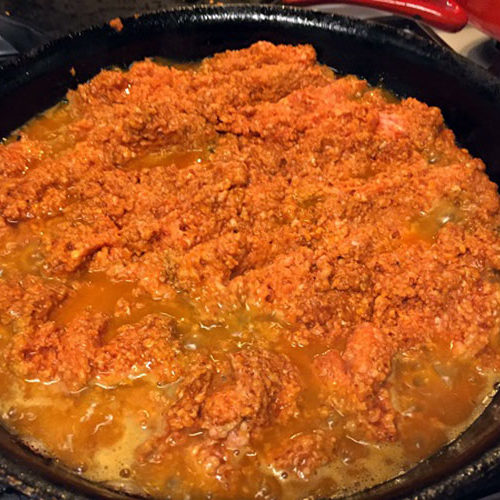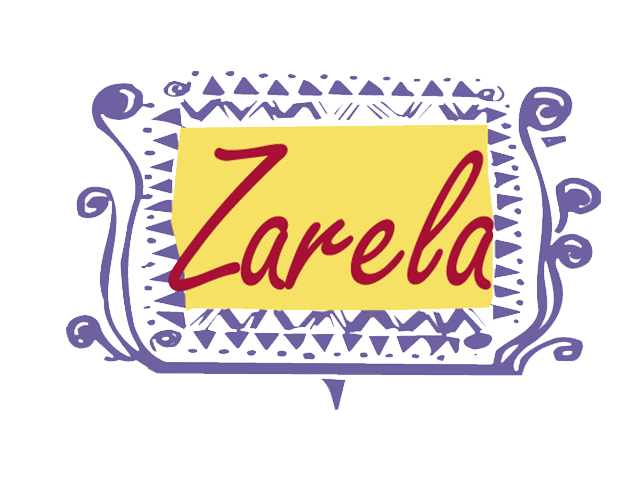Some of my earliest ranch memories are of the butchering/cooking sessions that followed every time we slaughtered a hog. This was always cause for celebration because all the women of the ranch congregated in our kitchen to help, laugh, and gossip, and everyone got something to take home afterward. Everything — I mean everything — was used and converted into some delicacy. There would be big tubs sitting over a barbecue pit to render the fat. This produced scrumptious chicharrones (cracklings) with crunchy bits of meat sticking to the crispy fat. I would eat all the meat and throw away the fat; my sister Aida would eat the fat and throw away the meat! The blood, heart, and liver would go to make morcilla (blood sausage). I never developed a taste for it, but everybody else loved it. The feet were pickled. We made fabulous tamales with the cooked meat from the head and butt. The loin was saved to be roasted or barbecued for company. As for the legs: My mother would slice one leg into thin steaks for carne adobada (made with a version of salsa de chile colorado brushed on the meat to marinate before cooking — still one of my favorites). My dad would take another to make a ham. A third went to the cowboys for a great chile con carne. The fourth leg was dedicated to this chorizo.
Today I duplicate some of our ranch recipes using U.S. pork. But the quality is very different. The pork here is so lean and so bland that you have to treat it almost like veal. The only cut that really works when you need a lot of flavor and texture is pork butt. The truth is that the pork we raised had a lot more fat, which is the vehicle of meat flavor. If you must avoid it, chorizo is not for you. But in defense of the ranch diet I must say that my great-grandfather, who ate pork and beef practically every day of his life, drank to excess on occasion, smoked cigars, and rarely exercised, lived to be eighty-seven years old. You may also be interested to know that pork fat is one of the less saturated animal fats. It has a lot of oleic acid, the most important monounsaturated fatty acid. I don’t recommend trying to reduce the proportion of fat in chorizo mixture.

Northern-Style Chorizo (Mexican Fresh Sausage Mixture)
Ingredients
- 5 pounds ground pork 3:1ratio of lean to fat
- 3 teaspoons salt or more to taste
- 1 teaspoon freshly ground black pepper coarse grind
- 1 teaspoon ground cloves
- 2 teaspoons
canela preferably freshly ground in spice grinder - 2 tablespoons Mexican oregano crumbled
- ¼ cup cider vinegar
- ¼ cup red wine or sherry
- 1 teaspoon sugar
- 4 ounces pure red chile powder stirred to a paste with ½-¾ cup boiling water
- 2 tablespoons minced garlic
- Lard, preferably
home-rendered for sautéing
Instructions
- In large mixing bowl, combine ground pork and all other ingredients except lard. Mix with your hands to distribute all seasonings evenly.
- Let rest, covered, overnight in refrigerator. The next day, prepare to cook the mixture.
- Melt 2-3 tablespoons of lard in large skillet over medium heat. (This is to get the cooking started; meat will provide its own cooking fat as you proceed.)
- Working in batches and being careful not to crowd skillet, sauté the chorizo mixture about 5 minutes, stirring often to cook evenly. Remove each batch to a bowl as it is done.
- When all the mixture has been sautéed, drain as much fat as you can from the cooked meat. Let cool to room temperature. Place cooled mixture in heavy-duty plastic bags (it’s probably smart to use several different sizes). Unless planning to use within a day or two, freeze at once.

